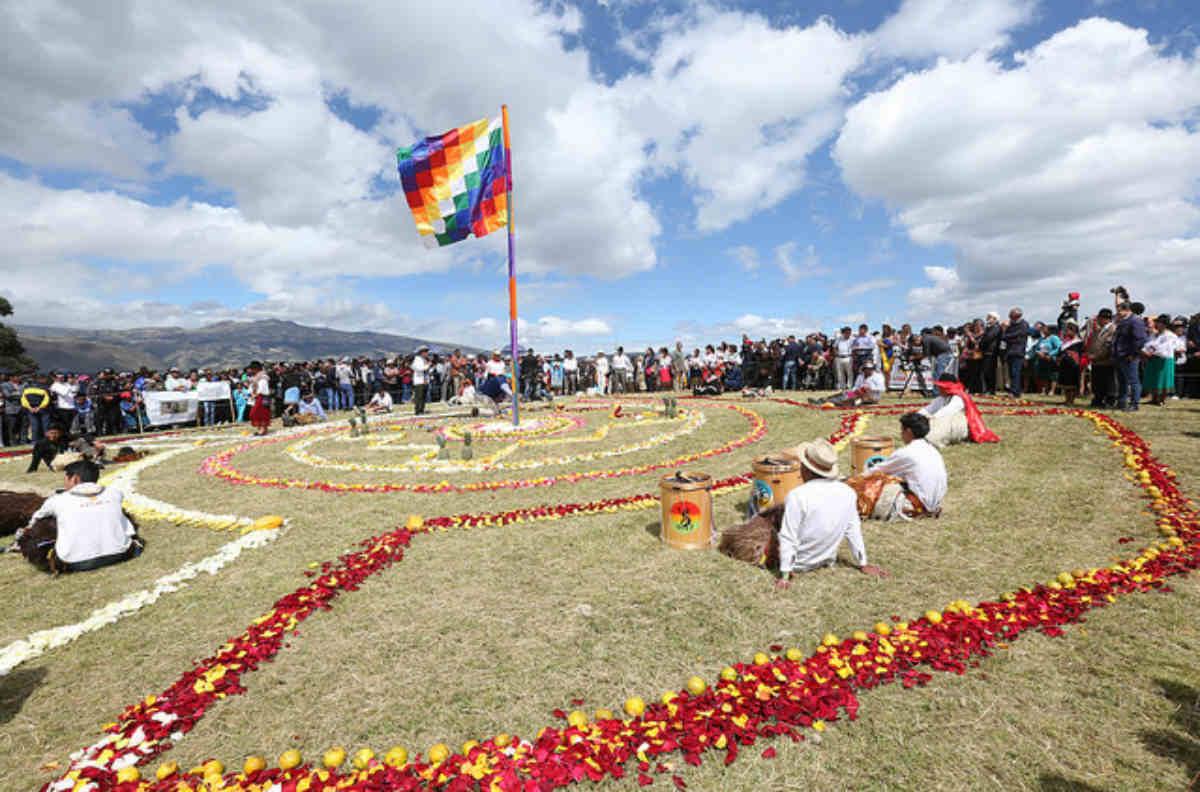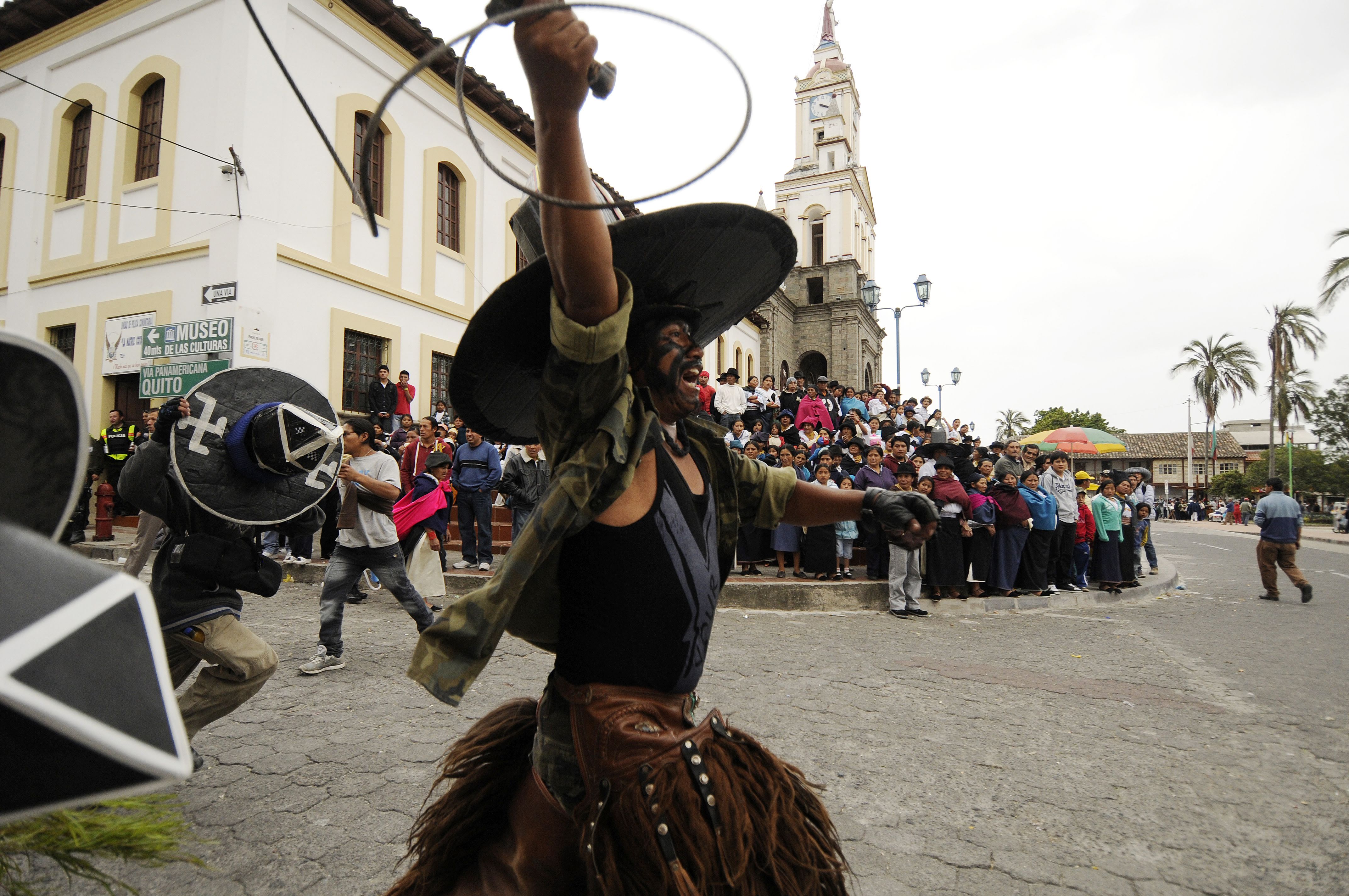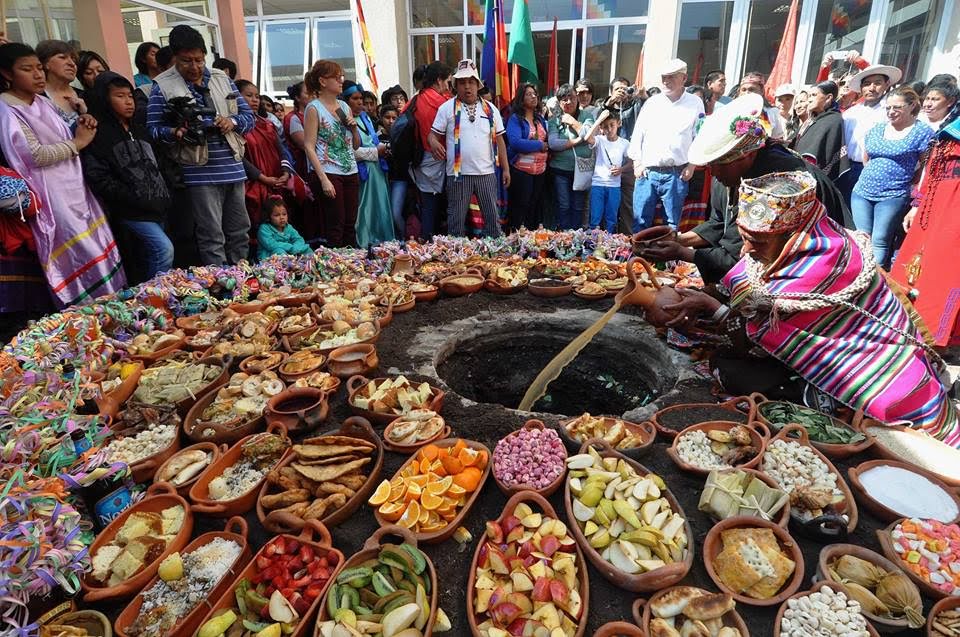For the indigenous people of Ecuador, Inti Raymi is the most important celebration of the year. The name “Inti Raymi” comes from the Quechua language. “Inti” means sun god and “Raymi” means celebration. Indigenous peoples throughout the Andean highlands show their gratitude to the sun and other elements of nature during the time of the summer solstice, starting their celebration on June 21. This change in seasons is, of course, recognized all around the world. But, Inti Raymi is a special, unique way to commemorate this time of year, rooted in the ancestral traditions and mythology of the Incas.
Before irrigation was employed in the Andes, the Inti Raymi was the last harvest where the farmers collected their dry grains. These grains would last a long time and could be saved in storage. After the harvest, no one was allowed to touch the soil. The farmers left the plants standing. The idea was that the stocks left in the ground would protect the soil from the wind. This was important because the climate became very dry with strong winds after the solstice.

In each community, there is a group of organizers who oversee the celebration. A person within the community who is well-like by many (and usually wealthy) is chosen to serve as the prioste. The prioste funds much of the festivities and opens his house to be used during celebration. In return for his generosity, the people bring him gifts and sing to him.
There are a number of characters that people disguise themselves as when they participate in Inti Raymi’s many parades and dances. The most important character is the diablo huma. This two-faced devil was conceived by the indigenous people as a joke on the Catholics. Whenever the Spanish praised God, the indigenous praised the devil. Whatever the Spanish told the indigenous people that God wanted them to do, they did the opposite. The indigenous drank and danced as a protest against the Spanish and their religion. In an Ecuador that is still largely Catholic today, that protest continues in a small way as people celebrate Inti Raymi with the colorful two-faced mask of the diablo huma.



From 1412 to 1535, the Inti Raymi took place every year under Inca rule. The celebration met opposition in the mid-16th century when the Catholic Spaniards colonized much of South America. As the Catholics worked to abolish and ban the indigenous religions, the indigenous peoples worked to add their own symbolism to Catholic rituals and architecture. For years, Inti Raymi was not fully celebrated. But, in the mid 20th century, a movement led by Faustino Espinoza Navarro reestablished the observation of this special harvest.
Today, much of the festivities surrounding Inti Raymi incorporate elements of Catholicism. For example, in Ecuadorian cities like Cayambe, Otavalo, and Cotacachi, the Catholic holidays for St. Peter and St. Paul are celebrated simultaneous to Inti Raymi.

The feasts of Inti Raymi are shared and free for everybody. Depending on the city, either fritada or hornado is the main dish of the Inti Raymi feast. The people also collectively engage in a meal called the pamba mesa, which is comprised of corn, potato, corn nuts, beans, quinoa, and other grains. A communitarian spirit of working together for the benefit of everyone is prevalent within the Andean highlands. This spirit is explicitly exhibited in the cooperative cooking and consumption of the Inti Raymi feasts.
In Cotacachi, Ecuador, there is a special component of Inti Raymi called Toma de la plaza. It takes place a little while after the solstice, during the last week of June. The Toma de la plaza, is a dramatic reenactment of the war between the Spanish and the indigenous. The performance can be quite realistic at times. Each side comes up with a strategy for attack and stones are thrown back and forth between the sides.
While most expressions of Inti Raymi are loud and fun, there is one place in the highlands where the celebration takes on a more solemn tone. This more serious ceremony takes place at an archeological complex known as the Cochasquí pyramids. Covered by mounds of earth, these pyramids are mere meters away from the equator. Visitors to the Cochasquí have a tremendous view of Quito’s valley as well as mount Pichincha and mount Cotopaxi. Many people visit the the Cochasquí during Inti Raymi to show their reverence to the indigenous people who instinctively knew where the middle of the world was, even without modern scientific tools.
Inti Raymi is a reminder that each culture around the world has a unique way to commemorate the changing of the seasons. This shift in seasons doesn’t only impact on the climate and agriculture. It has cultural impact as well. By taking part in Inti Raymi, the people of the Andean highlands are able to remember their heritage and pay homage to their ancestry.
